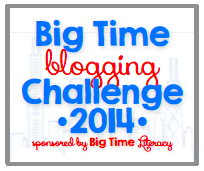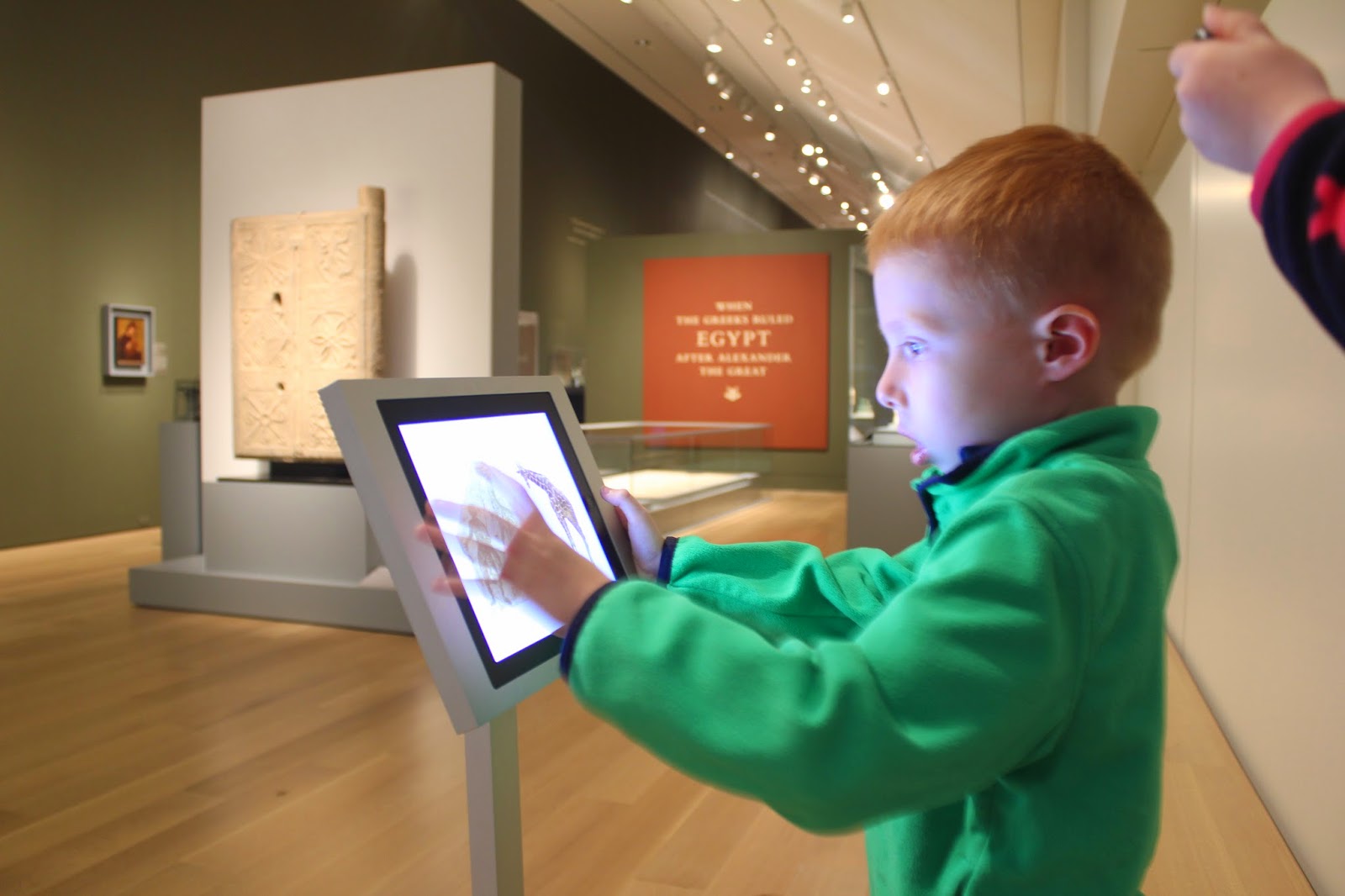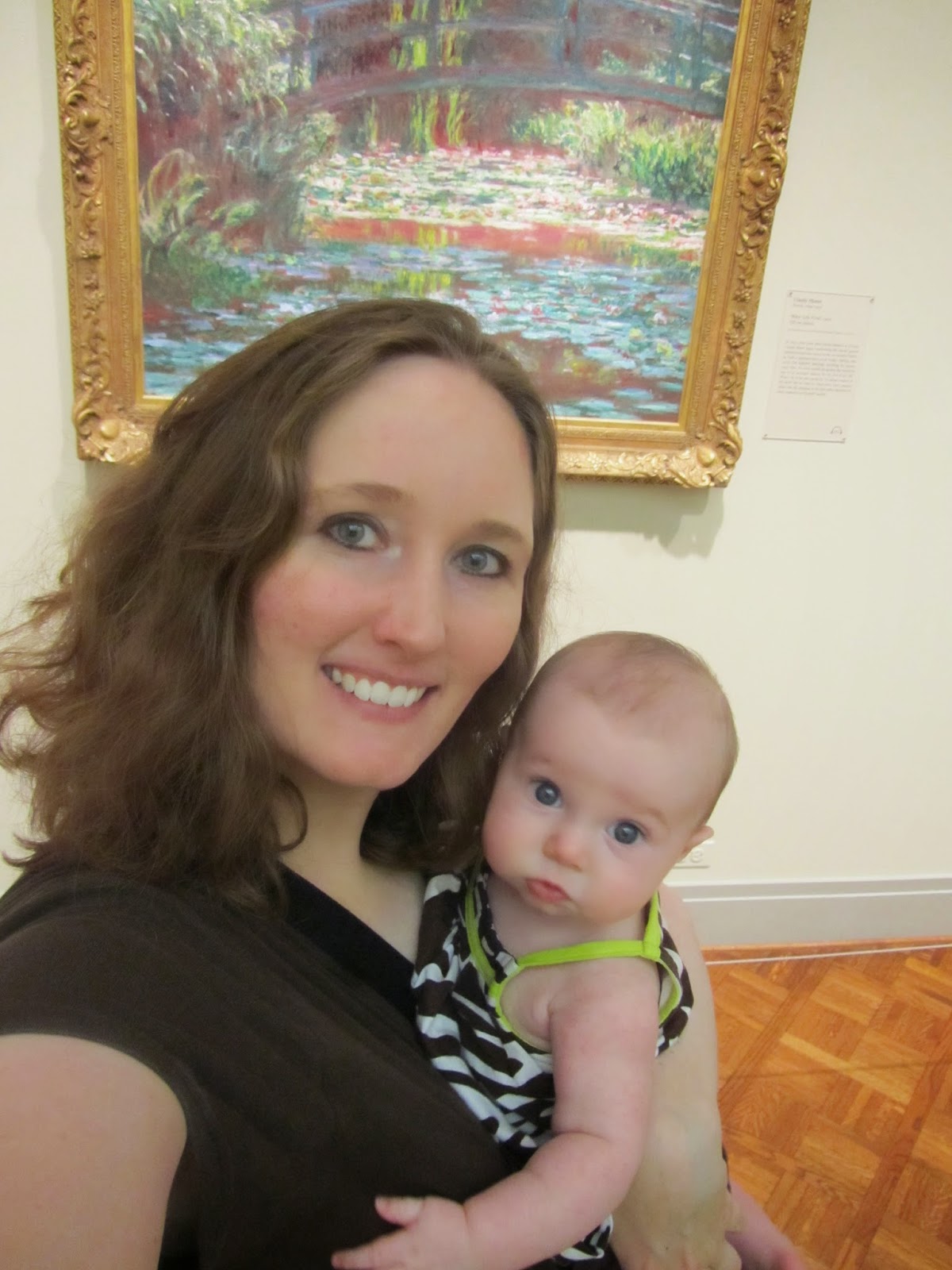Day 3:
Share a post about your family.
I have always written posts about school, with some little touches of me thrown in. So, if I am going to write about my family, then I am going to try and keep the purpose for this blog in tact. How can I write about literacy, and my kids? I got it!
I have been a big proponent of visual literacy all year as a Literacy Coach, but really the love affair began about 5 years ago when I did Arts Berwyn. Our artist, Michelle, taught us how to have the students look at paintings and list in a T-chart: Things I See/ Things I Infer. I used that strategy periodically over the next few years, but it wasn't until the close reading push that I realized how important this strategy is. Close reading a visual image uses the same comprehension and thinking strategies that close reading text does, just without the text. What a way to level the playing field! It also has been a very helpful formative assessment for me, as well as a strategy that helps me close read life a little easier.
For example...
Yesterday, we took my kids to the Art Institute. We hadn't been there in a few years, and my son has been asking to go to the Art Museum because he has never been there. Since he has, clearly he was too young to remember it. My son Evan is five, and my daughter Keira is 4. The last time we were there, my daughter was 6 months old or so. So, it's been a while.
While we were there, we had to see the Egyptian art for my son. He loves Egyptian queens. Little does he realize that most of the Egyptian queens he admires are actually men. We have tried to explain that, but it seems lost on him. He sees what he wants to see. He lost all attention when he found an iPad in the middle of Egypt. Oh well. This is extremely important when it comes to our students. They see what they see. As teachers, we sometimes have to help them see things differently. The trouble for us, though, is seeing it their way first. Otherwise, how can we support them?
My favorite art is impressionism. Always has been. Monet is my favorite. I took a selfie with my daughter when she was 6 months old in front of Water Lily Pond, and then again this time with my son. If I had a few million, it would be hanging in my home. Oh well. So, when we were in the impressionism and American galleries, I had my kids close read. As they are only preschoolers, I just asked them "What do you see/ What do you think?" questions.
 |
| Water Lily Pond- Monet |
What do you see?
Evan: frogs, bridge, forest, mud, stinky water. I think it's in a lake.
 |
| Nighthawks- Hopper |
Evan: door, window, a building, a cafe, a checker- the food guy, a lady, and potions, right there in those 2 bottles.
 |
| A Sunday on La Grande Jatte- Seurat |
What do you see?
Evan: girl
Keira: a boy, dogs
Evan: moms
Keira: dads
Why do you think they are moms and dads?
Evan: They watch their children.
Keira: People holding umbrellas, and kids holding umbrellas to keep no sun in their eyes.
I thought their responses were pretty typical of preschoolers. If they were in my classroom, though, and I were using the image to intro a unit, their responses might set some red flags for me. They clearly have not awareness of time. Their observations implied setting in terms of location, but not time period. And the fact that my son thinks that potions are sold at a cafe might need some reteaching. :) I did notice how they build on each other for the last image. My daughter is a bit of a daddy's girl, so Evan "close read" the first 2 images by himself, as Keira was off with daddy. During the last one, they had more of a conversation with each other while drawing. It was pretty cute. And, it's probably what our students need.
 |
| American Gothic- Wood |
As another experiment, I had them draw what they saw. Naming things isn't a problem for them. They have a good vocabulary, and can name all the random things they see. But do they see the big picture? We stopped in front of American Gothic and I had them draw what they saw. Trouble was, the painting was so popular that they couldn't actually see it. So, they made their own images. But here's a question: Is there anything wrong with that? I mean, wouldn't American Gothic be enhanced with the addition of a sun and a chicken, and an additional barn?
The truth is, when we look at paintings (or listen to songs, or read books) we can't always separate ourselves from the text. And, we shouldn't. That is what makes close reading possible. We shouldn't close read things that don't speak to us, because honestly that is when close reading actually happens. When we look slowly and purposefully at a text, it is supposed to create our own thoughts and ideas related to the text.
We had the most beautiful art in the world in front of us. But, the best close reading happened on the sidewalk in front of the museum. We got out of the car and started walking down Michigan Avenue. My son instantly shouts,
"Look at that funny bus! It's like 2 buses!"
"It's a double decker bus."
"Like the double decker couch in the LEGO movie. That is so cool!"
...one minute later...
"Look mom! A school bus! I bet they are going on a field trip to the Art Museum."
...30 seconds later...
"Wow!!! Look at that bus. It doesn't have any stairs. And it has 2 doors! Wow." (It was a CTA bus. I have never noticed that you don't have to step up to get into a CTA bus, btw). He glances across the street.
"Look Mom! A trolley! It lets the outside in! Wow."
I took my son to the Art Institute, and he chose to close read the buses outside of it. He looked at them closely, made observations, looked for patterns, and had some of his own ideas. Sometimes, we try to get kids to close read the things that we want them to. We are teachers. Perhaps, we need to pay more attention to the books they want to read, and help them transfer to independence. As much as I would love to say that my son walked around the Art Institute noticing the fine details of the art, he didn't. He noticed the buses, the staircases, the elevators, and the benches. Those were his lenses.
My daughter, at one point, looked at a piece of work and said, "That is masterous." My husband called me over to have me look at the piece. I laughed, and thought to myself that I wouldn't have given that piece a second thought. In fact, I didn't even snap a photo of it. But, in hindsight, perhaps that's another lesson, too. We each bring our own perspective to life.
My husband, a high school history teacher, loves the Renaissance galleries. Those paintings are painted in rich colors, and are larger than life. Literally. Many of them are massive in size and have such a window into life during the Renaissance. But, there was my husband, snapping a shot of a small charcoal sketch that I hadn't noticed at all in the halls of these paintings. It happened to be the only art by Albrecht Durer in the museum, and it is his favorite artist. He was bummed to find that they have over 200 more of his pieces that are just not on display.
So, there's the blog about my family. In art terms, we all choose to notice different things. As a family, we probably do too. Perhaps that makes us who we are: The O'Donnells!























What a great family-art-literacy connection! The Arts Berwyn Program was fantastic and I think I had the same artist because we learned that too. I have applied it to reading as well as science.
ReplyDeleteShe was great, wasn't she?
DeleteYour children sound amazing. It is so awesome that they are learning to look closely at things. It will be such a help to them!
ReplyDelete☺Jody
Camp Kindergarten
Thank you. I do think they are amazing, but I am also a little biased. :) Proud mom.
DeleteI love this post, Leah. You are an awesome writer. Your family is adorable. The lenses you look through to understand literacy and life are wonderful. :)
ReplyDeleteThanks, Colleen. That means a lot! You have some cuties on your hands, too.
DeleteI am also a big fan if that wasn't already obvious! Looking through different lenses, art/literacy, child/adult and what ever others are great teaching and learning tools!
ReplyDeleteThanks Kerry! We are all learning in this world, right?
Deletewhat a great family day at the museum...Thanks for sharing about your family through the lens of literacy! :-)
ReplyDeleteAnd it was free! Two teachers and 2 kids means free admission! We just discovered this.
DeleteI love how you bring it all back to literacy. Your photographs are gorgeous too!
ReplyDeleteThank you. My kids get a little tired of me photographing every movement they make, but I sure enjoy doing it!
Delete